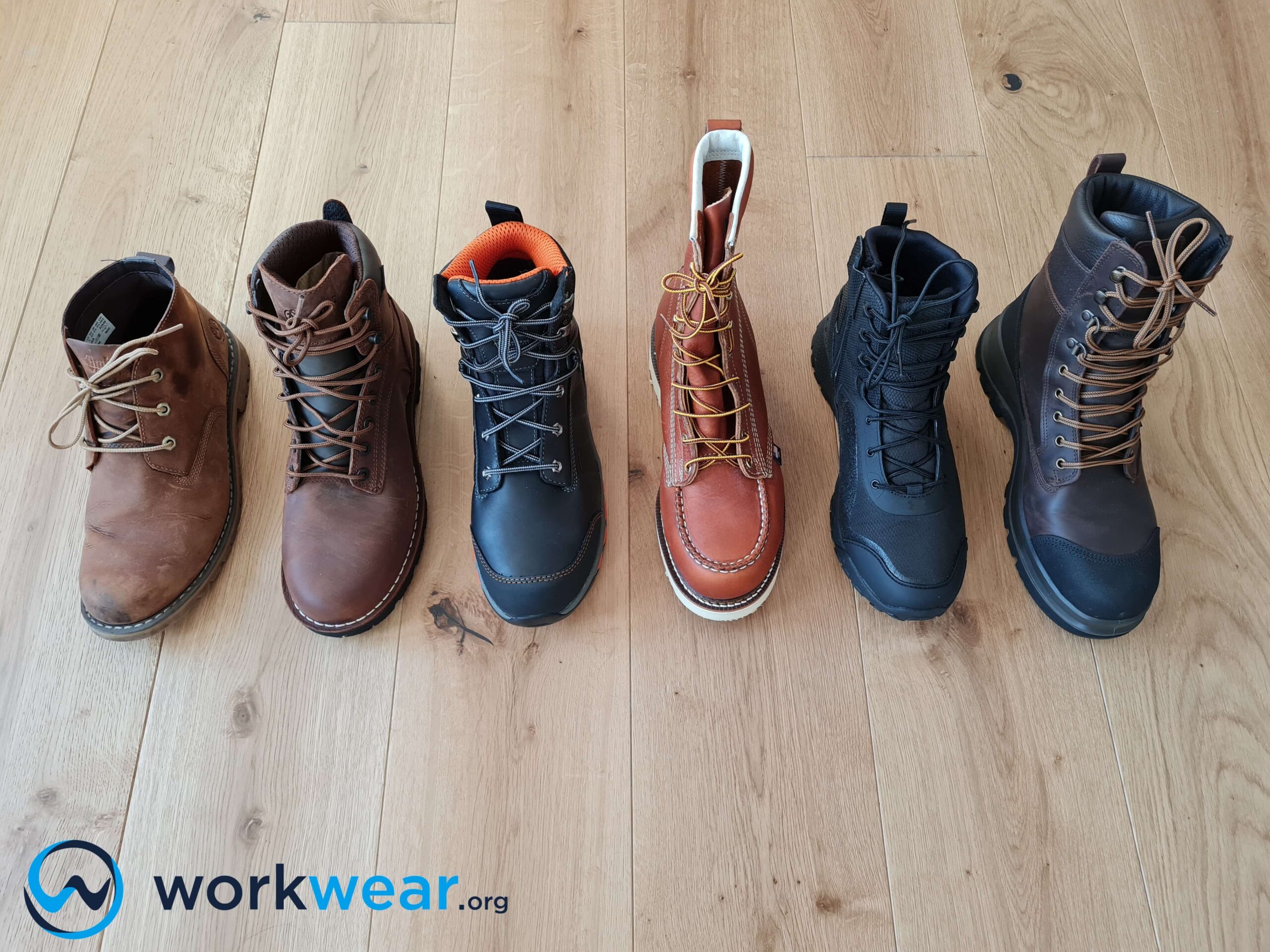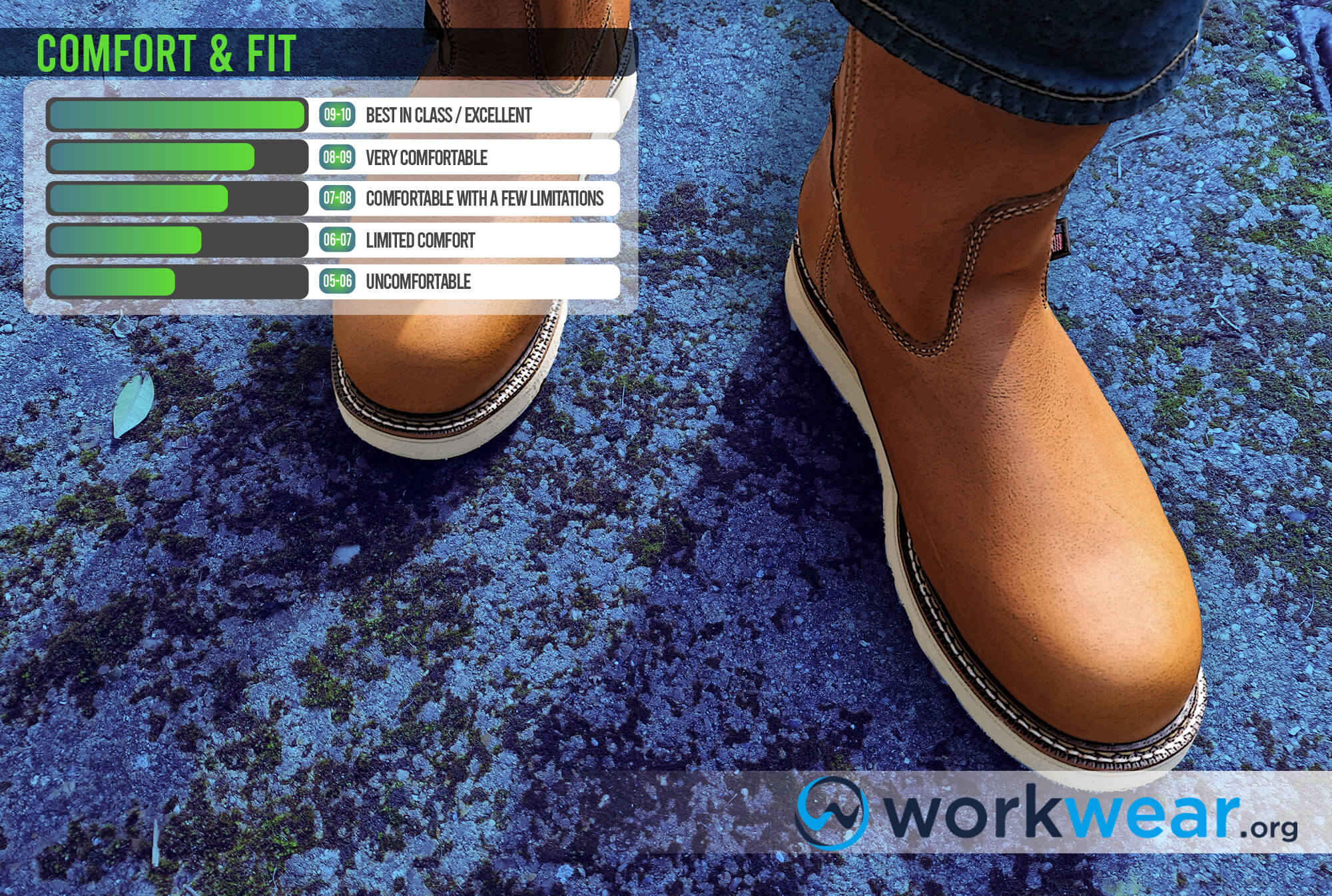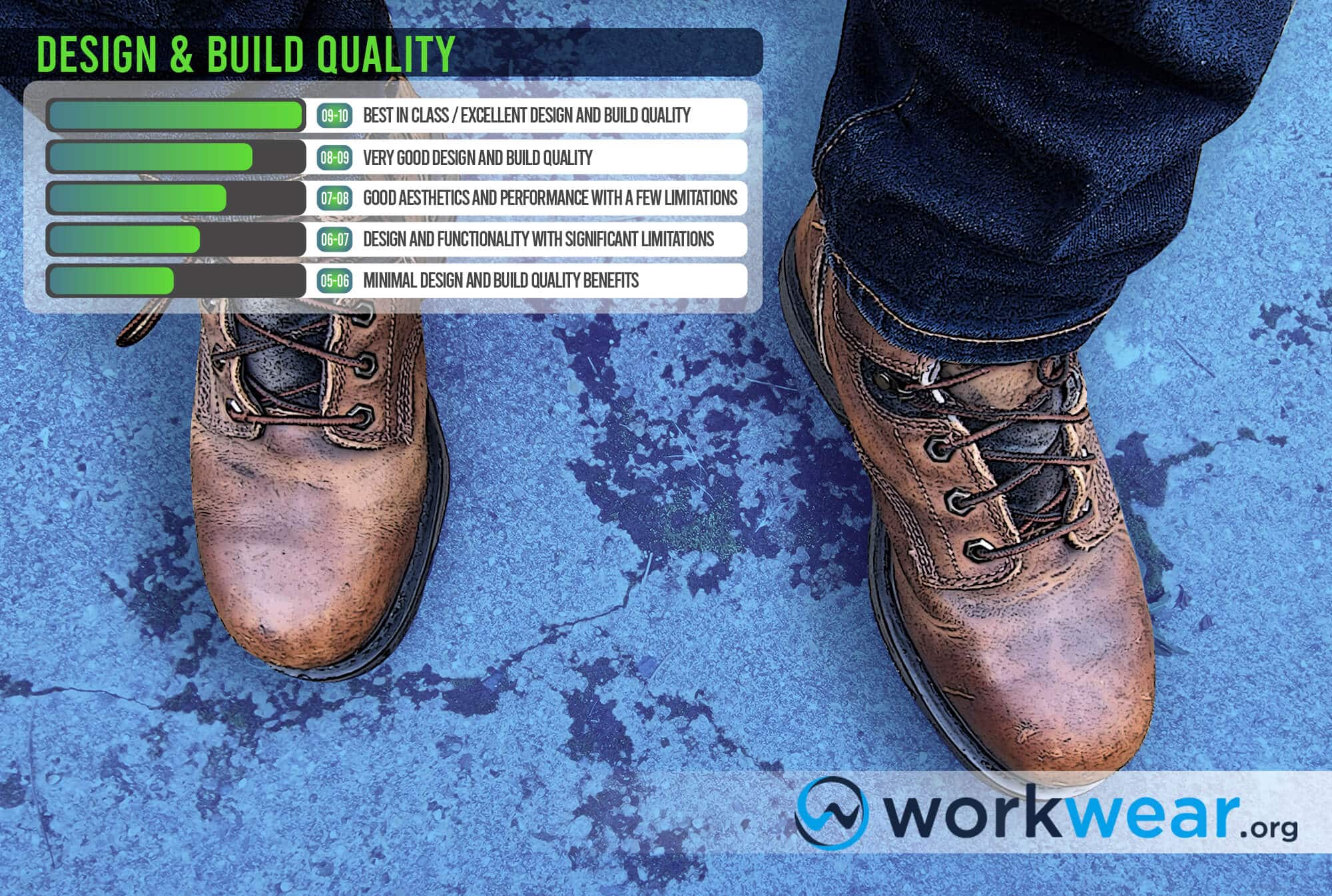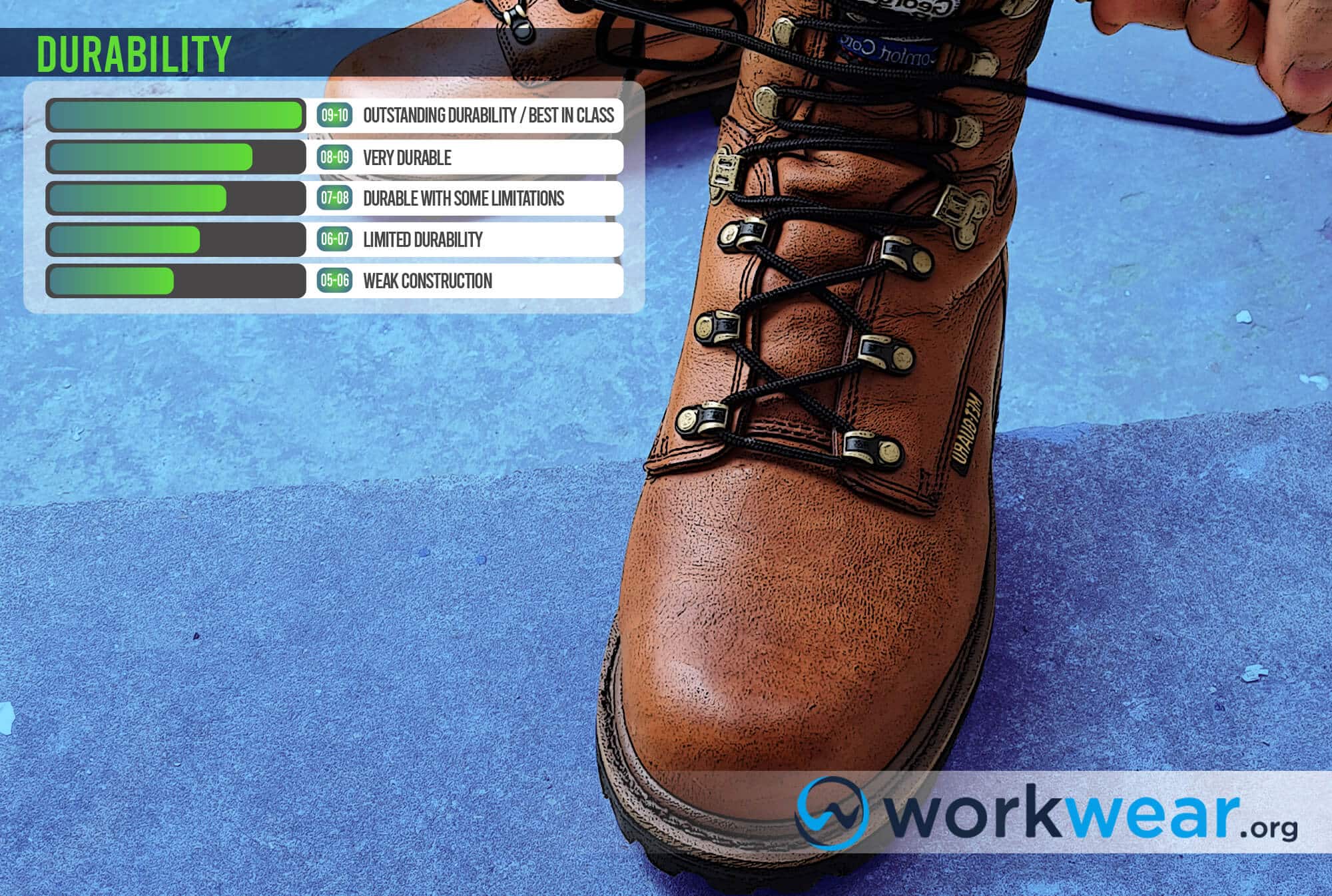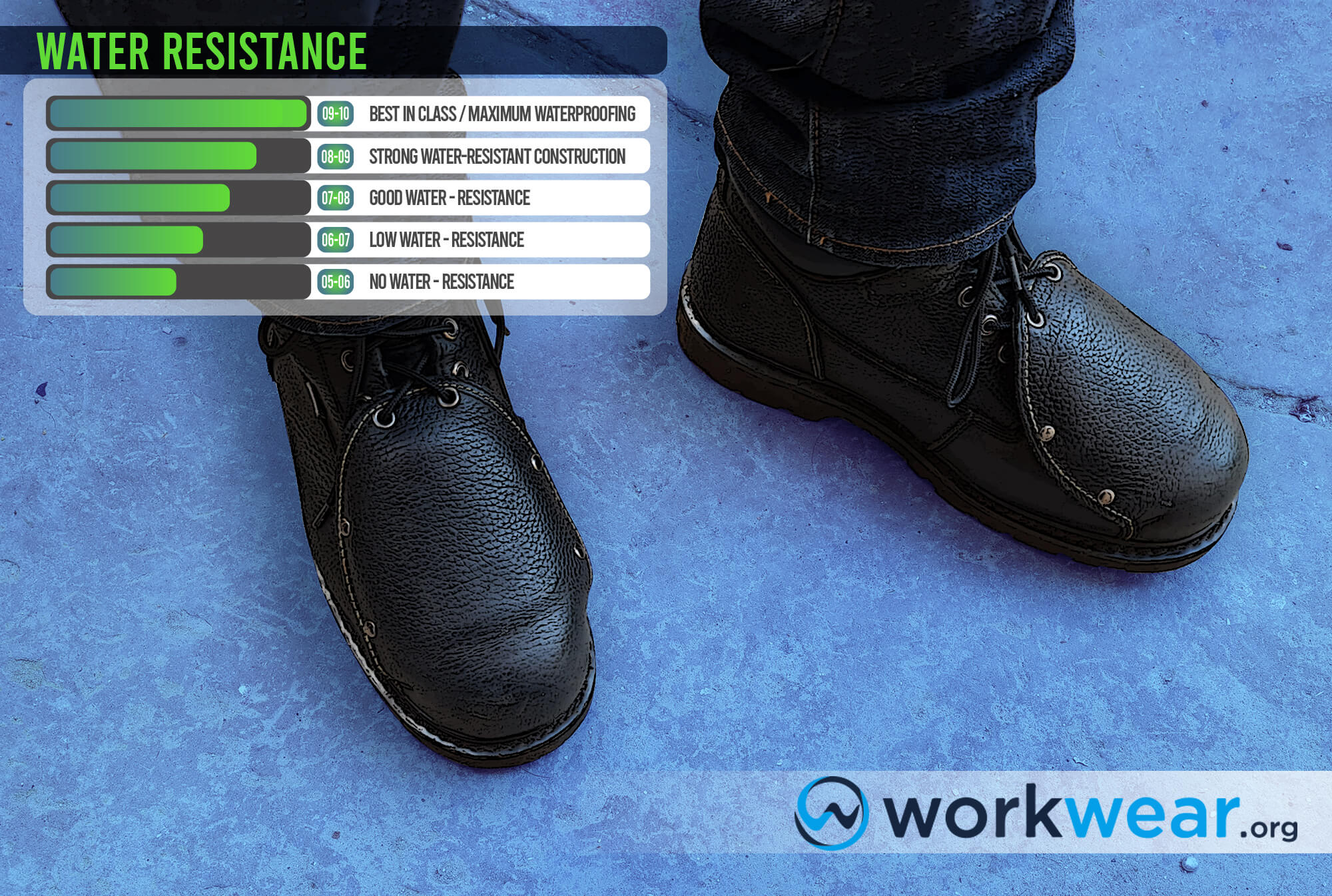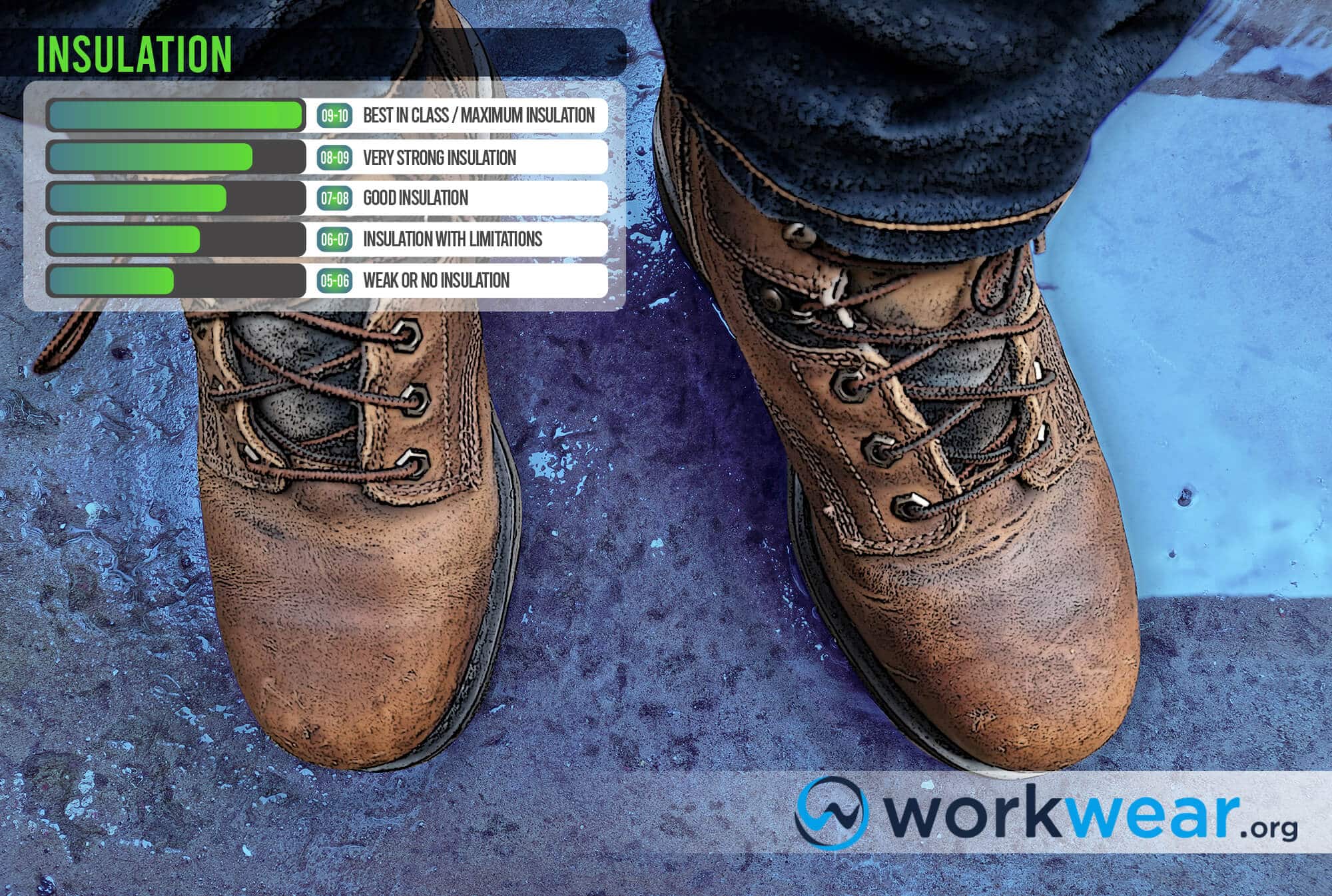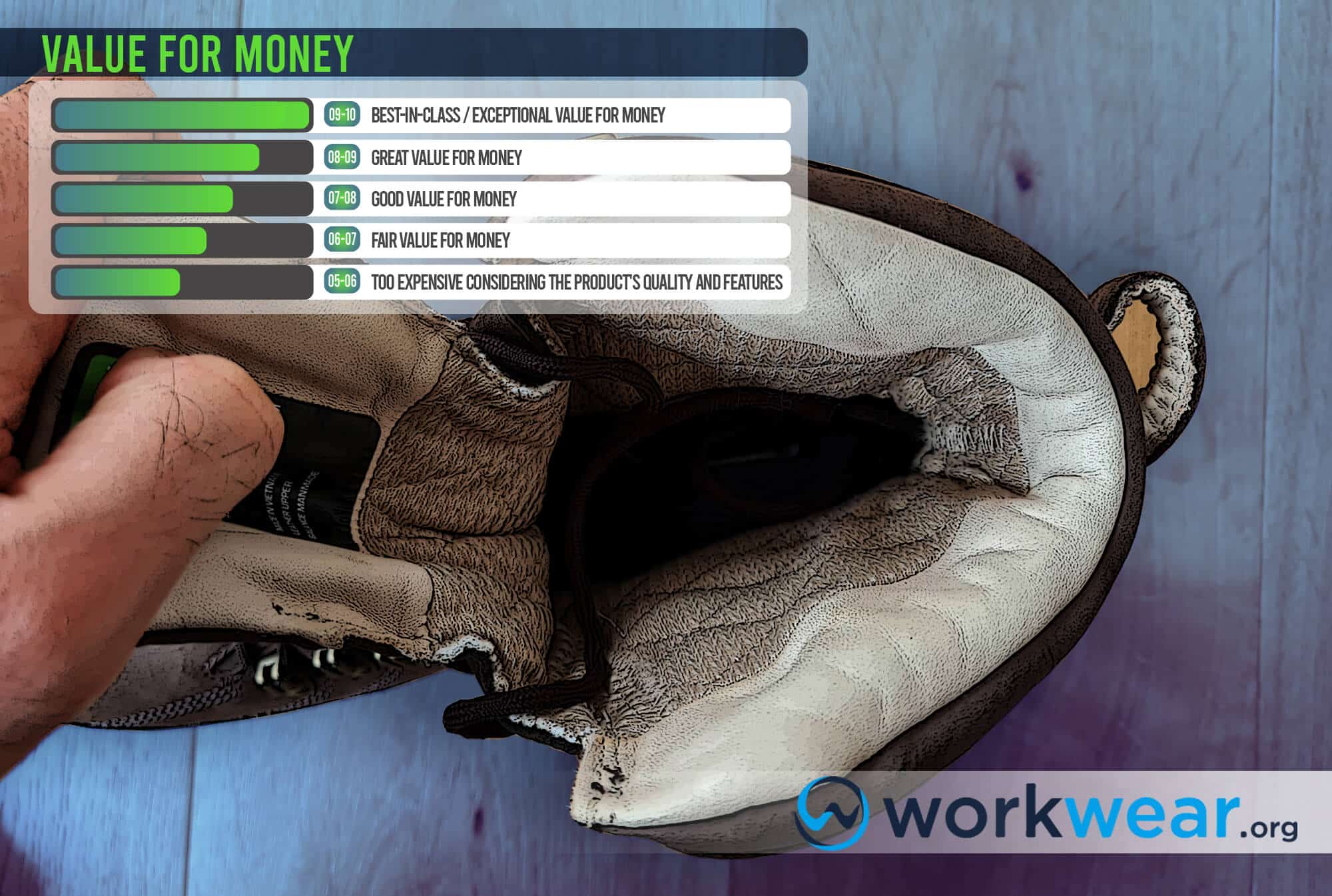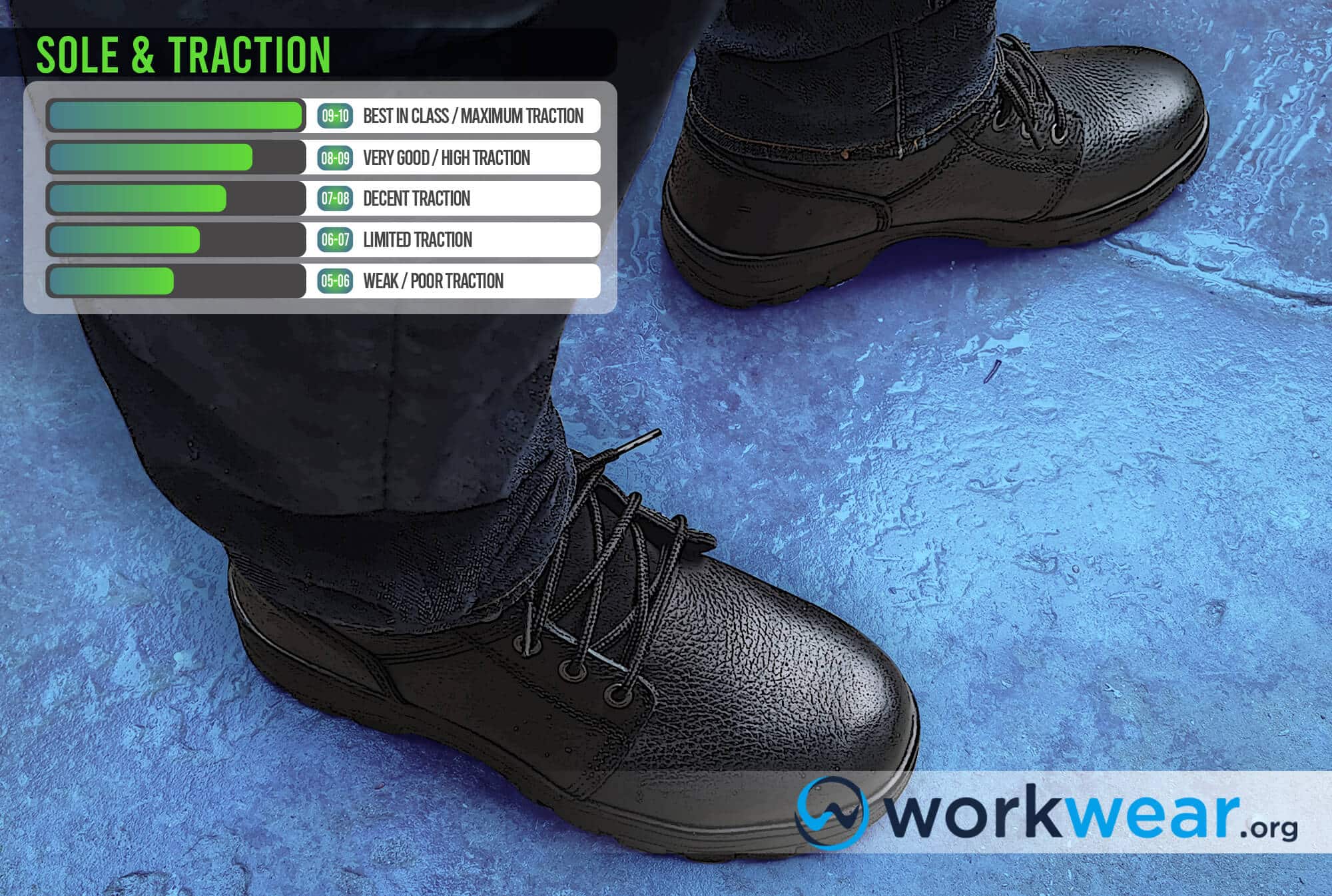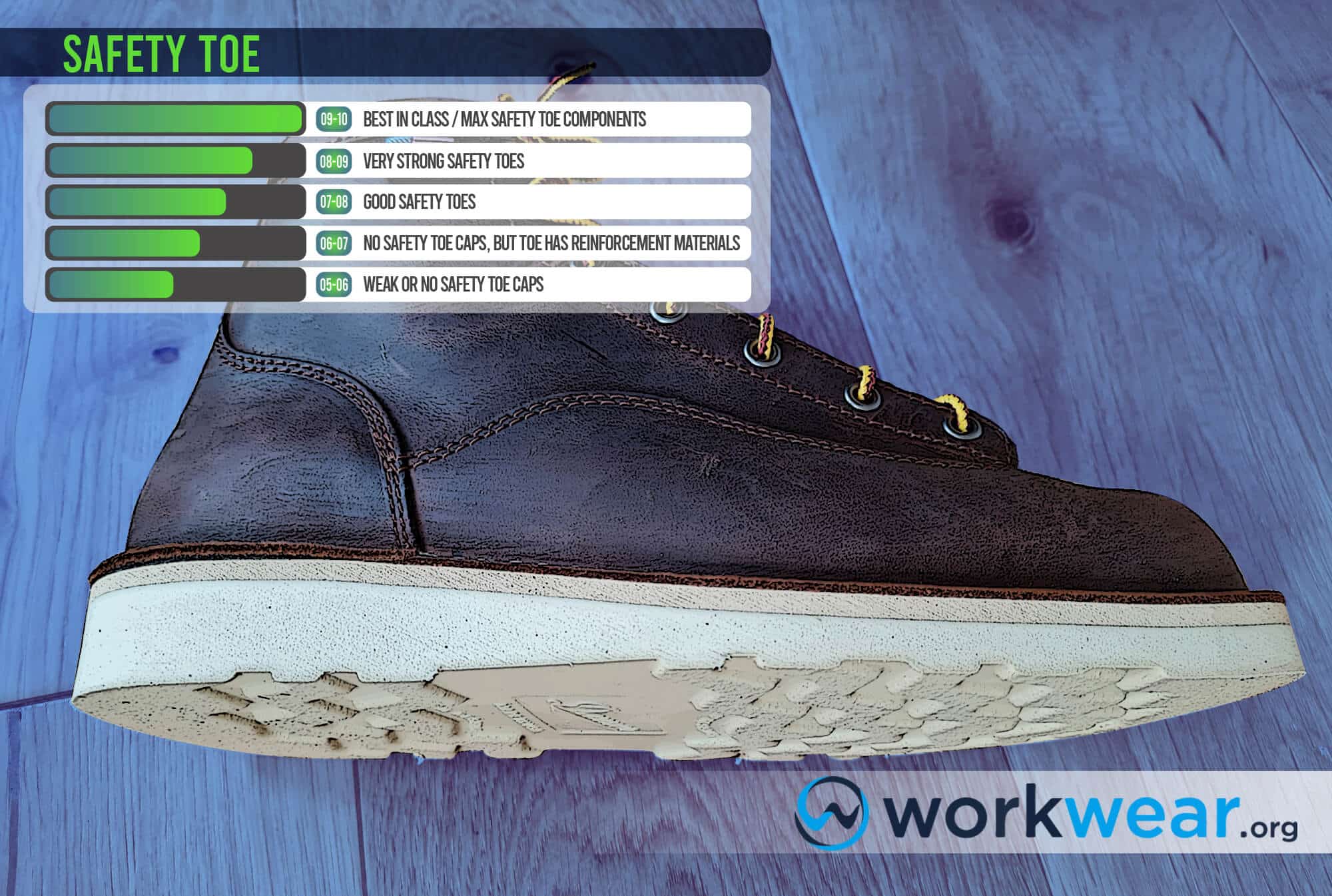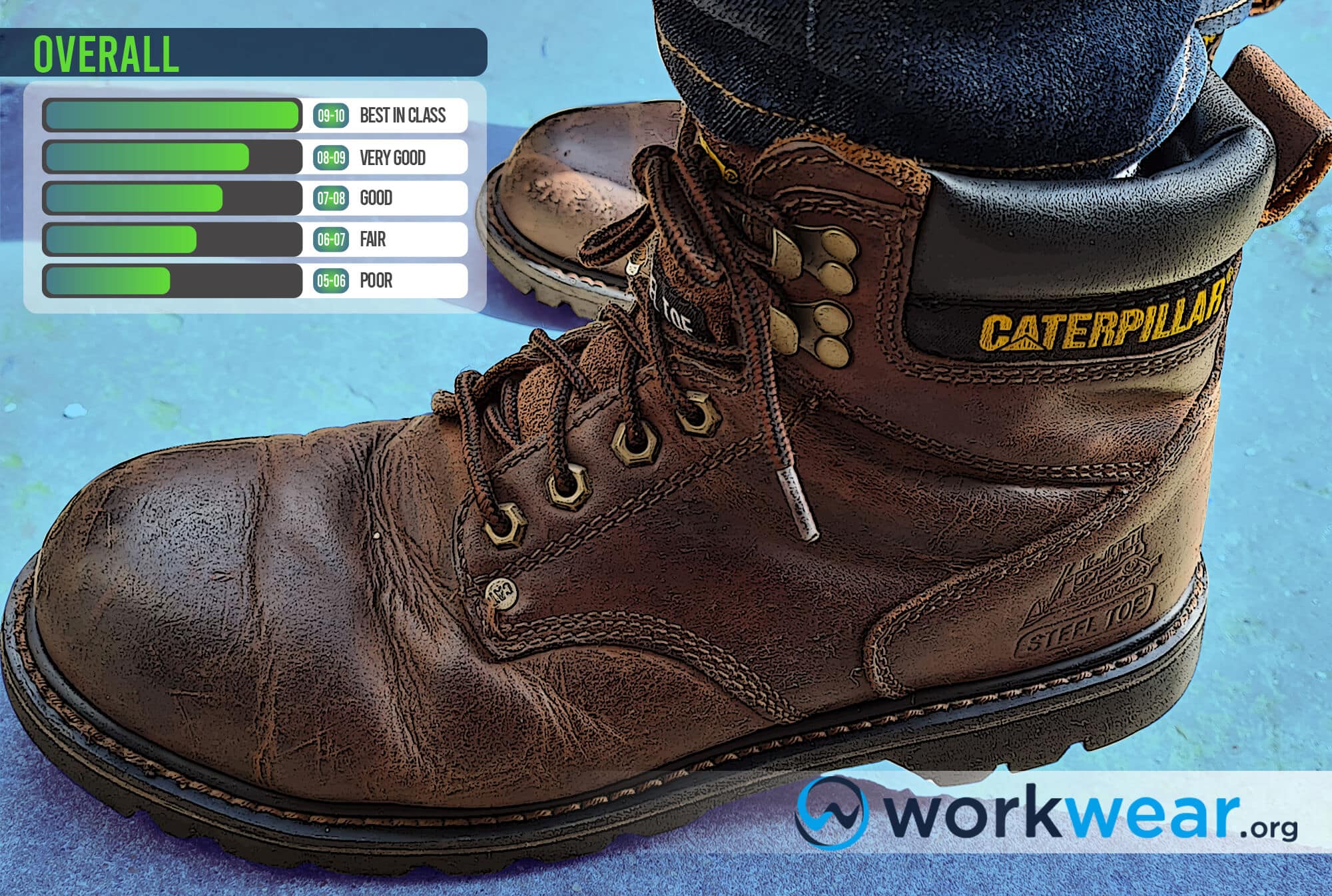How we test – Our methodology
Selection Methodology
We understand the value of choosing the best workwear for various needs. This strengthened our resolve to develop our own evaluation process, creating comprehensive product reviews that you can use as useful guides. We’ve examined the top options from the most popular brands and included choices from smaller or lesser-known companies that manufacture similarly high-quality workwear products.
This ensures that we’re covering the entire price spectrum while still following our guidelines for choosing the top choices for workwear – including boots, shoes, socks, jackets, and pants.
Our Selection Process
-
- We purchase these products so our team can personally try them out, checking their quality and how they work through all the applicable performance categories.
-
- We then proceed to wear and use these products in different scenarios to find their functionality regarding durability, comfort levels, and other aspects that we consider most crucial for testing the overall product quality.
-
- By using the workwear items, we can work more efficiently to gather the necessary information that we need to write comprehensive reviews and articles.
-
- Using the data we collect from our user experiences, we then create comparisons versus other products with similar features.
We recommend work shoes, boots, pants, jackets, and socks to suit your needs and preferences while accounting for the most important factors. This will help you make a smart decision without going through the time-consuming and inconvenient process of sorting yourself.
We don’t receive these products for free to maintain our editorial independence and impartiality – which are at the core of what we do. We’re not affiliated with any brands, which empowers us to objectively and, whenever necessary, critically review the products. This enables us to distinguish the top-quality ones from the ones with less-than-stellar characteristics. This way, we can produce unbiased evaluations that will bring great value – as reviews you can turn to while shopping for the best workwear products for various purposes and settings.
Performance Categories & Ratings Explained
Below we’ll discuss the performance categories we considered essential for choosing the best workwear for various settings and requirements. Each category considers specific components and features that contribute to the overall value of the work boots, shoes, jackets, socks, and pants. They enable us to give a clear picture of how they perform in applicable conditions. We also included brief explanations of the ratings in each category, so you’ll know what each numerical value represents in terms of the workwear’s performance in the given classification.
Comfort & Fit
Comfort is one of the most important factors when choosing any workwear. This category considers how comfortable work boots, shoes, jackets, socks, or pants feel when worn while considering the environment where they’re supposed to be worn.
We use the workwear products to test for comfort while walking or standing for extended periods. We also checked how comfortable they feel in challenging work environments, such as carrying heavy loads on construction sites or prolonged exposure to cold conditions.
We understand that comfort is subjective, so we delve deep into the components that contribute to how comfortable each product feels while used on the job. We also provide information about the workwear’s fit based on our personal experiences and data from other users, so you can understand how the products will fit given your body or feet’s dimensions. Discussing the workwear’s comfort features is aimed at helping you make the right choice for the most comfortable user experience.
Design & Build Quality
This category tackles both the aesthetic and functional aspects of the workwear. Design relates to the workwear’s appearance and performance in the specific environment for which it’s intended. This aspect can also be used to determine the aesthetic suitability of the workwear for use in different settings. On the other hand, the build quality discusses the workwear’s features and materials – and how they affect the overall performance of the workwear. We also inspect the construction method used – how it relates to the workwear’s structural strength, appearance, and functionality to address the needs of different worksites.
For this category, we evaluate whether work footwear and garments would maintain their high-performance features and appearance in different work conditions. For example – do the work boots look versatile enough to be worn on and off the job site, or is the design too industrial-looking for casual use? On the other hand, workwear’s build quality is tested by inspecting their performance and strength while doing various tasks at work.
Durability
The durability focuses on the workwear’s materials and how the components contribute to the overall strength, especially for long-term use. The information on this specific category will give you an idea of how the work shoes, boots, jackets, socks, and pants will perform in different settings. It also showcases the products’ ability to maintain premium structural integrity, sustaining high levels of comfort, safety, and durability in the long run. We understand that durability is affected by the conditions where the workwear product is used and the frequency of its use, so these factors are accounted for as well whenever applicable in the discussion. The long-term strength of workwear products is affected not only by their materials and constriction but also by where and how they are used. With this in mind, we make it a point to emphasize the work environments for which the reviewed products are most suitable. We aim to help readers maximize the durability of the workwear they choose in appropriate work settings.
We test the products’ durability with heavy use in different work scenarios – including the most challenging ones. We examine how the work footwear and garments’ materials held up against the most common signs of damage (such as scratches and tears) after continuous use in variable work settings.
Water Resistance
The ability of the workwear to resist water penetration is an important consideration when you’re constantly exposed to exceptionally wet conditions. This is also necessary if you work outdoors and there’s a chance of rain while finishing the day’s tasks. The level of water resistance gives you an idea of how long comfortable dryness can be maintained with exposure to wet elements. We describe and explain workwear products’ water resistance levels as accurately as possible to help our readers choose the best option according to their needs. Completely waterproof work boots, shoes, pants, socks, or jackets will seal out wetness even when submerged in liquids for long periods.
On the other hand, water-resistant workwear can only sustain dryness for a short period and only when exposure is limited to a small amount of liquid. Water resistance is essential for workwear products used in settings with constant water and liquid exposure. This ensures long-lasting protection against soaking while finishing the required tasks in variable conditions.
To test work boots, shoes, and socks for waterproofness, we wear them in wet conditions to determine if they can block liquids and keep our feet dry. Meanwhile, work pants and jackets are worn in the rain and with direct liquid application to test their water absorption.
Insulation
Details on a product’s insulation can determine the user’s comfort level in cold environments. It’s important to check if the workwear you’re choosing is fitted with proper insulation materials – not just enhanced with plush materials that do little to preserve warmth. One of the most popular types of insulation used in work boots and jackets is a durable yet low-profile material called Thinsulate. The weight of the insulation material has a direct impact on the warmth that the boot can deliver. For example – 200 grams of insulation material is ideal for cool temperatures and a limited amount of physical activity or for cold weather environments while engaging in high activity levels. Meanwhile, 1000 grams or more of insulation works best for extremely cold settings with very minimal physical activity required. Not all workwear needs insulation, as it can also get in the way of a comfortable experience when used in warm settings.
We test insulated work footwear and garments by using them for extended periods in cold environments. This includes working outdoors in winter and checking if the products can trap much-needed warmth to keep the body comfortable.
Value for Money
With all the components that make up the different types of workwear, it’s also important to consider how these features relate to the products’ price points. This will help you determine the workwear’s value, considering all the benefits that it can provide and how they relate to the price that you’ll need to shell out. More expensive products are not necessarily better than the ones with budget-friendlier prices. The information can also help you fully maximize the purchase – and the money you spend – with all the factors considered.
Rather than solely focusing on the price, we determine the value of the workwear more efficiently by scrutinizing its overall qualities about the price tag. Doing so gives our readers a clearer idea of how beneficial the workwear can be as it addresses specific concerns and requirements on the job.
With regards to work footwear (such as work boots and work shoes), in addition to the above, we also took into account the following categories:
Sole & Traction
The sole plays a key role in the footwear’s comfort, safety, and overall performance. The level of traction that’s delivered by the outsole can determine how comfortably and safely you can walk in different surface conditions without losing your balance. This is especially crucial while walking on wet or unstable floors or terrains. If you plan to use the shoes or boots on tricky surfaces, it’s a good idea to check the work footwear’s traction level to ensure it’s high enough to stabilize your steps.
Work shoes and boots’ traction levels are tested by walking on challenging surfaces with the highest slipping risks. These conditions included wet floors, muddy ground, and sloped terrains. We check how grippy the outsoles are in such tricky surfaces, and how they can keep us safe by stabilizing our steps.
Safety Toe
The safety toes of a work boot or shoe deliver continuous protection against serious injuries from compression or impact hazards. These threats may be equipment or construction materials that can suddenly drop or roll on the feet. The protective toes are made with different materials, including steel, aluminum, and carbon fiber that act as barriers, protecting the toes from being crushed. Certain industries require safety toe shoes or boots and it’s best to verify your work setting’s requirements to ensure complete foot safety against falling objects while on the job. On the other hand, non-harsh work environments, such as those in office settings and retail, may not require safety toe work boots or shoes. In such cases, soft-toe work footwear options without protective caps are typically sufficient to address the user’s needs on the job.
We assess work footwear’s safety toes by using them in areas exposed to dangerous compression and impact. The protective toes are tested by how they can shield the toes against severe injuries when heavy items are rolled or dropped on the feet by accident.
Overall
The overall score is achieved by considering all the categories applicable to specific workwear products. The products’ ratings for comfort & fit, durability, design & build quality, water resistance, insulation, value for money, sole & traction, and safety toe (these last two for work boots and shoes) are considered to allow us to come up with overall scores. By looking at the overall score, you’ll get a quick summary of the overall performance of the workwear and how it fares against the other products in the list. This score is based on five stars, with 5 being the best-in-class rating and 1 being poor.
Other Factors Considered
Aside from the categories above, we consider other factors while evaluating workwear. Safety standards – such as ASTM for industrial safety and hygiene – are considered, ensuring that the products we choose follow the regulations set in place by specified industries for enhanced safety at work. Sustainability standards are also taken into consideration whenever possible for applicable products. Selecting products that use eco-friendly materials and responsible manufacturing processes enables us to review and recommend high-quality workwear that doesn’t harm the environment. Finally, we also consider reader feedback for choosing the products we review. Our readers share their opinions about different products through our website’s dedicated feedback section, and we deliberate on these comments during our product assessments.
Conclusion
Our team meticulously evaluates the workwear items in our top picks lists by combining collated data, through testing, wearing and using the products. We use a rigorous selection rating methodology to provide unbiased and accurate reviews (and the corresponding ratings) that will bring great value to our readers. Our goal is to help people choose the best-in-class workwear suitable for their specific job, profession, or activity – with minimal effort and time exerted for the ultimate convenience. As part of improving what we do, we always welcome readers’ feedback, so if you have any comments and ideally suggestions for improvements to make, please don’t hesitate to get in touch via our contact page.
The Workwear.org Editorial Team
September 2023
